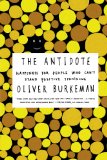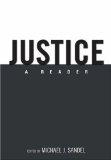Summary | Excerpt | Reviews | Read-Alikes | Genres & Themes | Author Bio

How to Tell Right from Wrong in Everyday Life
by Randy CohenThe man behind the New York Times Magazine's immensely popular column "The Ethicist"--syndicated in newspapers across the USA and Canada as "Everyday Ethics"-- presents a provocative, thematic collection of advice on how to be good in the real world.
The man behind the New York Times Magazine's immensely popular column "The Ethicist"--syndicated in newspapers across the United States and Canada as "Everyday Ethics"--casts an eye on today's manners and mores with a provocative, thematic collection of advice on how to be good in the real world.
Every week in his column on ethics, Randy Cohen takes on conundrums presented in letters from perplexed people who want to do the right thing (or hope to get away with doing the wrong thing), and responds with a skillful blend of moral authority and humor. Cohen's wisdom and witticisms have now been collected in The Good, the Bad & the Difference, a collection of his columns as wise and funny as a combination of "Dear Abby," Plato, and Mel Brooks. The columns are supplemented with second thoughts on (and sometimes complete reversals of) his original replies, follow-up notes on how his advice affected the actions of various letter writers, reactions from readers both pro and con, and observations from such "guest ethicists" as David Eggers and the author's mom. Each chapter also features an "Ethics Pop Quiz".
The Good, the Bad & the Difference is divided into seven sections:
Each section provides a window into how we live today, shedding light on the ways in which a more ethical approach to the decisions we make, and to our daily behavior, can make a big difference in how we feel about ourselves tomorrow.
An enjoyable and thought provoking book - one to dip into rather than to read cover to cover.

If you liked The Good, The Bad and The Difference, try these:

by Oliver Burkeman
Published 2013
A witty, fascinating, and counterintuitive read that turns decades of self-help advice on its head and forces us to rethink completely our attitudes toward failure, uncertainty, and death.

by Michael J. Sandel
Published 2010
Michael J. Sandel's "Justice" course is one of the most popular and influential at Harvard. Up to a thousand students pack the campus theater to hear Sandel relate the big questions of political philosophy to the most vexing issues of the day. Justice offers readers the same exhilarating journey that captivates Harvard students.